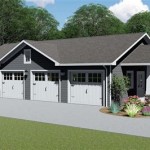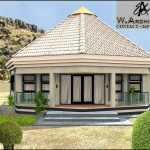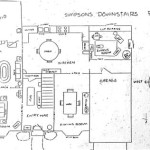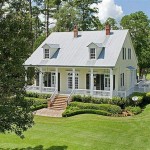Nova Scotia Log Home Plans: A Comprehensive Guide
Nova Scotia, with its stunning natural landscapes and rich maritime history, provides an ideal backdrop for log home construction. Log homes offer a unique blend of rustic charm and modern comfort, appealing to those seeking a connection with nature and a sustainable lifestyle. Selecting appropriate Nova Scotia log home plans is a crucial first step in realizing this dream, requiring careful consideration of various factors to ensure the final structure is both aesthetically pleasing and functionally sound, adhering to local building codes and environmental guidelines.
Log homes in Nova Scotia must withstand a diverse range of weather conditions, from harsh winter storms to warm, humid summers. This necessitates a design approach that prioritizes energy efficiency, durability, and proper moisture management. Furthermore, the availability of local materials, the specific characteristics of the chosen building site, and the individual preferences of the homeowner all play significant roles in shaping the final log home plan. Understanding these elements is paramount for a successful and fulfilling log home building experience in Nova Scotia.
The following sections will delve into key considerations for Nova Scotia log home plans, covering critical aspects such as design styles, log species, energy efficiency measures, and relevant building codes. By understanding these concepts, prospective log homeowners can make informed decisions and create a home that seamlessly integrates with the Nova Scotian environment and lifestyle.
Choosing the Right Log Home Design Style
The architectural style of a log home is a significant determinant of its overall aesthetic appeal and functionality. Several design options cater to different tastes and lifestyle requirements. Understanding the nuances of each style allows homeowners to select a plan that best reflects their vision.
One popular style is the traditional "cabin" style, characterized by its simplicity, compact size, and emphasis on functionality. These homes often feature a single main living area with a loft or additional bedrooms situated above. The classic cabin style is well-suited for smaller properties or as a vacation retreat, offering a cozy and intimate atmosphere.
A more elaborate option is the "lodge" style, frequently found in larger log homes designed for entertaining and accommodating larger families or groups. Lodge-style homes often incorporate expansive great rooms with soaring ceilings, multiple fireplaces, and generous outdoor living spaces such as decks and porches. These homes often feature significant architectural detailing, like exposed beams and intricate log work.
Modern log homes represent a contemporary approach, blending the rustic elements of log construction with sleek lines and open floor plans. These designs often integrate large windows to maximize natural light and offer panoramic views of the surrounding landscape. Modern log homes prioritize energy efficiency and incorporate sustainable building materials and technologies.
Another emerging trend is the hybrid log home, which combines log construction with conventional framing techniques. This approach allows for greater flexibility in design and construction, offering a balance between the traditional log home aesthetic and the affordability and efficiency of conventional building methods. Hybrid log homes can incorporate a variety of exterior finishes, such as siding or stone, to create a unique and personalized look.
Regardless of the chosen design style, it's crucial to consider the specific characteristics of the building site. Factors such as topography, sun exposure, and prevailing winds can significantly impact the design and orientation of the log home. A well-designed plan will take these factors into account, maximizing natural light, minimizing wind exposure, and ensuring proper drainage.
Selecting the Appropriate Log Species for Nova Scotia
The choice of log species is another crucial consideration for Nova Scotia log home plans. Different wood species offer varying levels of durability, insulation, and aesthetic appeal. Understanding the properties of each species is essential to ensure the log home can withstand the rigors of the Nova Scotian climate and meet the homeowner's specific needs.
Eastern White Pine is a popular choice in Nova Scotia due to its availability, workability, and relatively low cost. White pine is known for its stability and resistance to warping, making it a suitable choice for log construction. It also possesses good insulation properties, helping to maintain comfortable indoor temperatures throughout the year. However, white pine is softer than some other log species, making it more susceptible to insect damage and decay if not properly treated.
Red Pine, also known as Norway Pine, is another viable option for log homes in Nova Scotia. Red pine is a stronger and denser wood than white pine, offering improved resistance to insect damage and decay. It also has a more pronounced grain pattern, giving log homes a rustic and visually appealing appearance. Red pine is slightly more expensive than white pine but offers enhanced durability and longevity.
Eastern Hemlock is another native species in Nova Scotia. Hemlock is known for its tight grain and resistance to decay. It is a strong softwood that takes stain well. It is a very stable wood that is relatively easy to work with.
Spruce is a common and economically priced option for log homes. It is light in color and relatively soft, however, does not offer the same level of weather and insect resistance as some other species. It is more common to see Spruce used in areas as accents or interiors.
Regardless of the chosen log species, proper treatment and maintenance are essential to prolong the lifespan of the log home. This includes applying a high-quality wood preservative, regularly inspecting the logs for signs of insect damage or decay, and promptly addressing any issues that arise. Proper chinking and sealing of the log joints is also crucial to prevent air and water infiltration.
Incorporating Energy Efficiency into Log Home Plans
Energy efficiency is a paramount concern for any modern home, and log homes are no exception. By incorporating energy-efficient design features and construction techniques, homeowners can significantly reduce their energy consumption and minimize their environmental impact. In Nova Scotia, where heating costs can be substantial during the winter months, energy efficiency is particularly important.
Proper insulation is a critical component of an energy-efficient log home. While log walls themselves provide some insulation value, additional insulation may be required to meet or exceed local building code requirements. This can be achieved through various methods, such as adding insulation to the roof and foundation, using insulated windows and doors, and incorporating a vapor barrier to prevent moisture intrusion.
Air sealing is another crucial aspect of energy efficiency. Log homes are susceptible to air leaks around the log joints, windows, and doors. Proper chinking and sealing of these areas can significantly reduce air infiltration and improve the overall energy performance of the home. Using expanding foam insulation to seal gaps and cracks is another effective way to minimize air leaks.
Passive solar design principles can also be incorporated into log home plans to maximize energy efficiency. This involves orienting the home to take advantage of solar gain during the winter months and minimizing solar heat gain during the summer months. Large south-facing windows can capture sunlight and warm the home during the winter, while overhangs and shading devices can block direct sunlight during the summer, preventing overheating.
High-efficiency heating and cooling systems can further reduce energy consumption. This includes installing a geothermal heat pump, a high-efficiency furnace, or a ductless mini-split system. These systems can significantly lower heating and cooling costs compared to traditional systems. Programmable thermostats can also help to optimize energy usage by automatically adjusting the temperature when the home is unoccupied.
The selection of energy-efficient appliances and lighting fixtures is another important consideration. Energy Star-rated appliances and LED lighting fixtures consume significantly less energy than traditional appliances and fixtures, helping to reduce overall energy consumption. Using low-flow water fixtures can also conserve water and reduce water heating costs.
Solar panels and other renewable energy systems can further enhance the energy efficiency of a log home. Installing solar panels on the roof can generate electricity, reducing reliance on the grid. A solar hot water system can also provide hot water for domestic use, further reducing energy costs. Government incentives and rebates are often available to encourage the use of renewable energy systems.
Finally, proper ventilation is essential to maintain healthy indoor air quality and prevent moisture buildup. A heat recovery ventilator (HRV) can exchange stale indoor air with fresh outdoor air while retaining heat, improving air quality without compromising energy efficiency. Regular maintenance of the ventilation system is crucial to ensure it operates effectively.
Navigating Nova Scotia Building Codes and Regulations
Compliance with local building codes and regulations is essential for any construction project in Nova Scotia, including log homes. Familiarizing oneself with these codes and regulations is crucial to ensure the log home meets all applicable safety and structural requirements. Failure to comply with building codes can result in delays, fines, and even the demolition of the structure.
The Nova Scotia Building Code is based on the National Building Code of Canada and sets minimum standards for the design and construction of buildings. The code covers a wide range of topics, including structural integrity, fire safety, energy efficiency, and accessibility. Log homes must comply with all applicable provisions of the building code.
In addition to the provincial building code, local municipalities may have their own bylaws and regulations that apply to log home construction. These bylaws may address issues such as zoning, setbacks, lot coverage, and environmental protection. It is essential to consult with the local municipality to determine the specific requirements that apply to the building site.
Obtaining the necessary building permits is a crucial step in the construction process. Before starting any construction, a building permit must be obtained from the local municipality. The permit application must include detailed drawings and specifications for the log home, as well as documentation demonstrating compliance with all applicable building codes and regulations.
Inspections are conducted throughout the construction process to ensure compliance with the building code. These inspections may include inspections of the foundation, framing, insulation, plumbing, and electrical systems. It is essential to schedule inspections at the appropriate stages of construction to avoid delays and ensure the log home meets all applicable requirements.
Specific code requirements pertaining to log home construction include log grading and species requirements, log wall system design and construction, and fire safety measures. Log walls must be constructed in accordance with approved engineering practices to ensure structural integrity. Fire safety measures, such as smoke detectors and fire-resistant materials, must be incorporated into the design of the log home.
Working with a qualified builder or contractor who is experienced in log home construction is highly recommended. An experienced builder will be familiar with the local building codes and regulations and will be able to ensure that the log home meets all applicable requirements. They can also provide valuable guidance on design, material selection, and construction techniques.
Engaging a structural engineer may be necessary to ensure the structural integrity of the log home, particularly for larger or more complex designs. A structural engineer can review the design plans and provide recommendations to ensure that the log walls and roof are adequately supported. They can also provide calculations to demonstrate compliance with the building code.
Finally, it is essential to maintain proper documentation throughout the construction process. This includes keeping copies of building permits, inspection reports, and construction plans. These documents may be required for future renovations or resale of the log home.

Cottage Plans Riverbend Log Homes

Log Homes

Showcase Log Home In Nova Scotia Kealey Tackaberry Homes

Dream Log Home Floor Plans Designs

Home Blue Ridge Log Cabins

Eagle Rock Log Home Package Timberhaven Timber Homes

Do It Yourself Home Building Ez Log Structures

Cottage Plans Riverbend Log Homes

2024 Summer Feature The Liberty Log Cabin Home Timberhaven Timber Homes

Private Islands For Log House At Johns Back Lake Nova Scotia East Central








